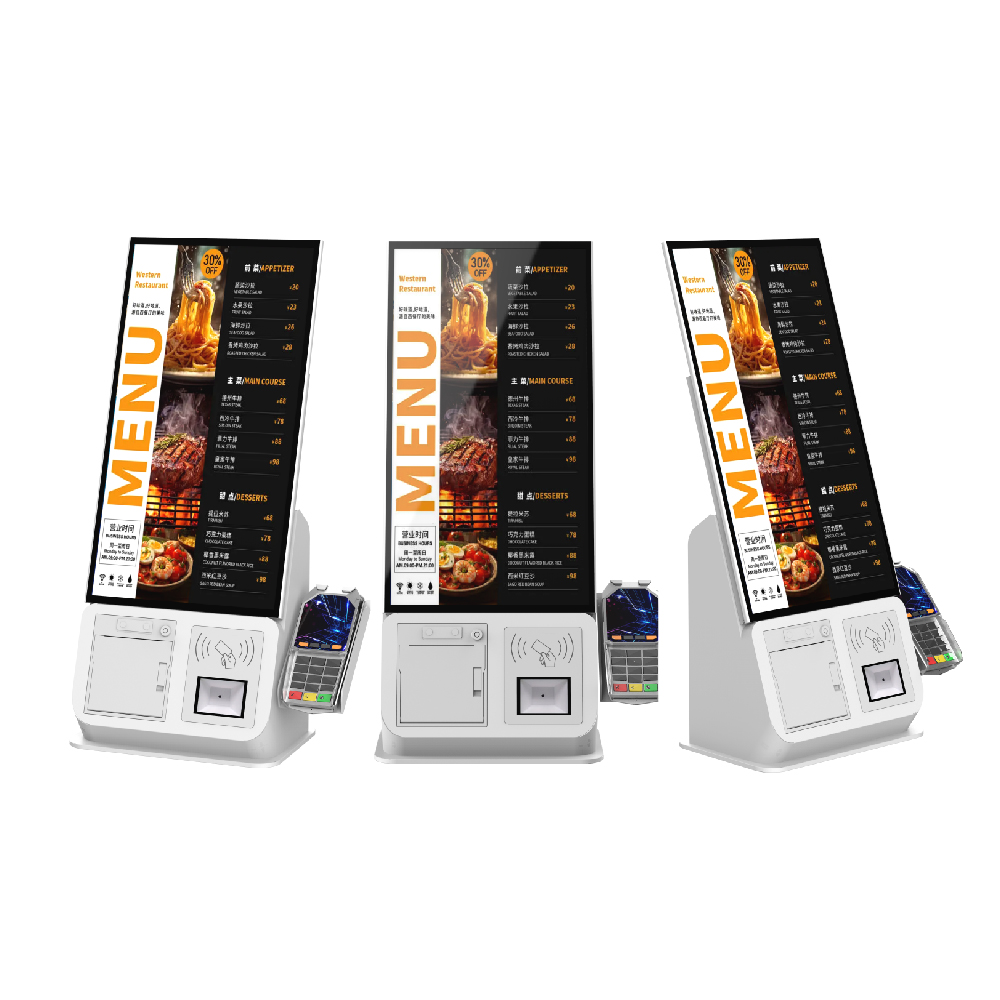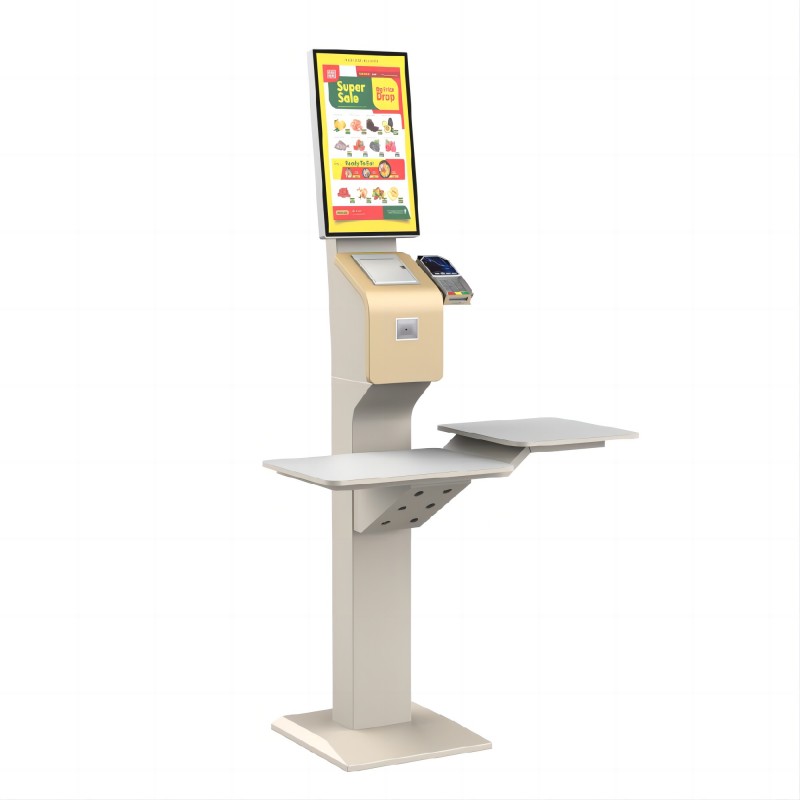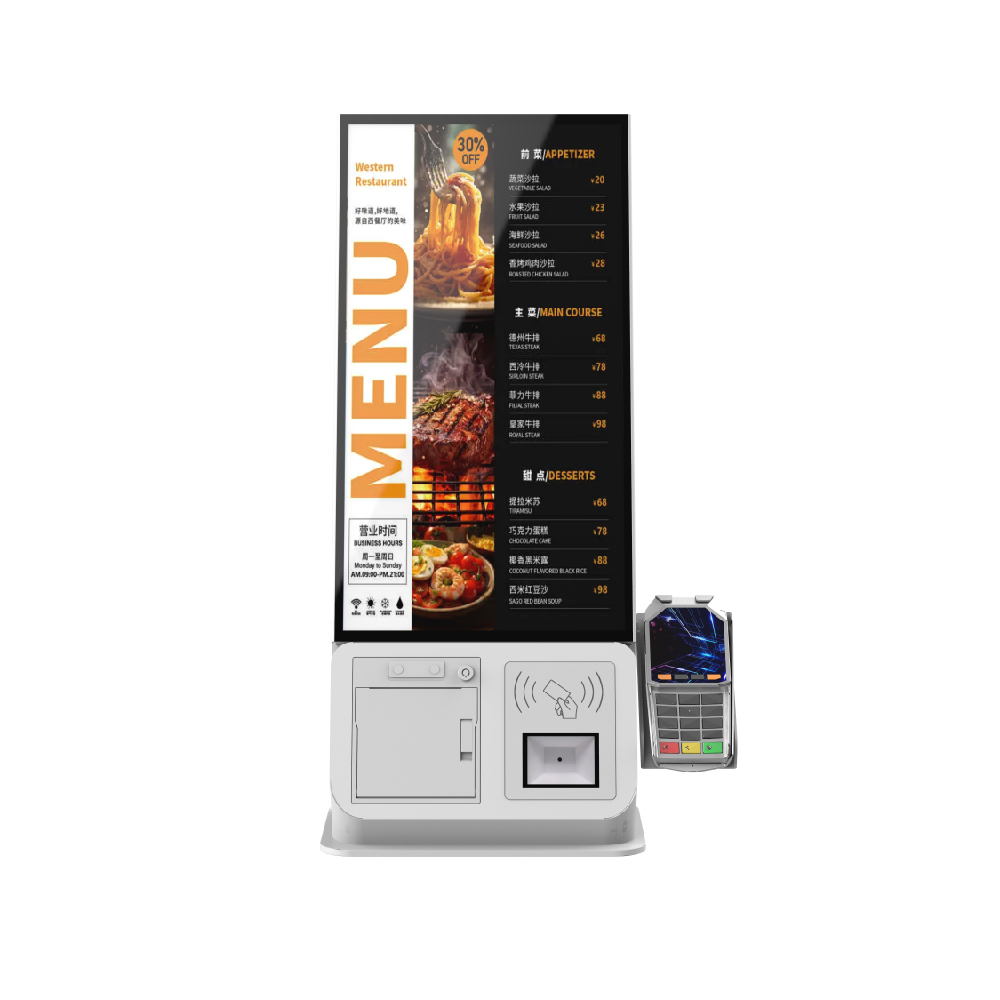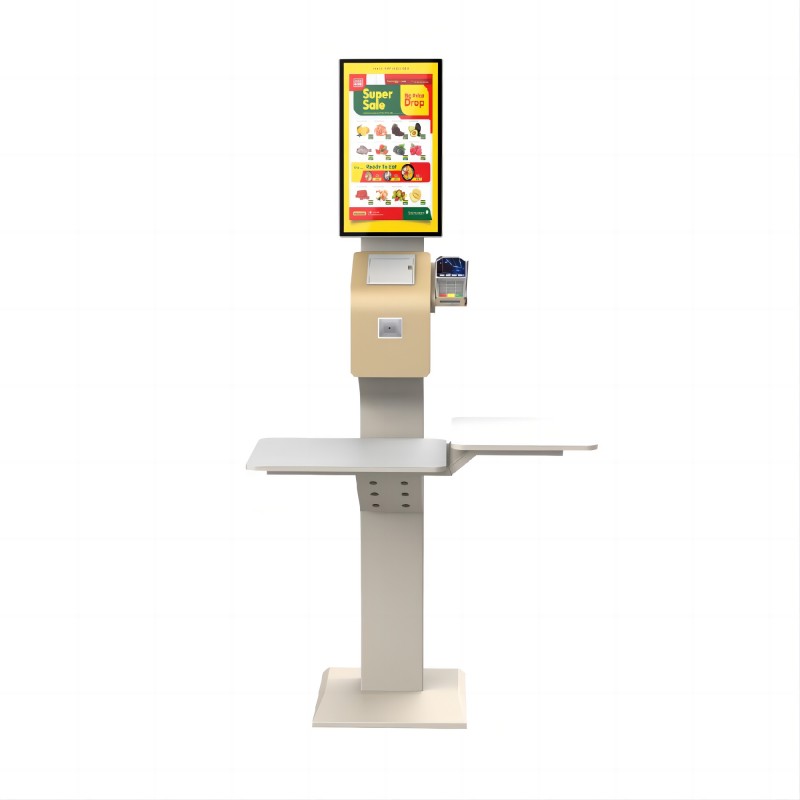| Component/Process Step | Specifications/Details | Component/Process Step | Description |
|---|---|---|---|
| Enclosure/Chassis | Durable metal or steel construction, weather-resistant for outdoor models | 1. Design and Planning | Engineers and designers create the kiosk's design, specifying dimensions, materials, and components. |
| Touchscreen Display | 17-22 inch capacitive/resistive touchscreen, HD resolution, anti-glare coating | 2. Component Sourcing | High-quality components like screens, payment terminals, and printers are sourced from reliable suppliers. |
| Payment Terminal | EMV-compliant card reader, NFC reader for mobile payments, secure PIN pad | 3. Metal Fabrication | The enclosure is fabricated using precision cutting, bending, and welding techniques, followed by assembly. |
| Cash Acceptor/Dispenser | Multi-currency support, counterfeit detection, automatic coin and bill dispensers | 4. Component Integration | Internal components such as the motherboard, power supply, and peripherals are installed and wired inside the enclosure. |
| Receipt Printer | Thermal printer, 80mm paper width, auto-cutter, high-speed printing | 5. Software Installation | The operating system and payment processing software are installed and configured. |
| Barcode/QR Scanner | 1D/2D barcode and QR code scanning, adjustable for different heights | 6. Quality Testing | The assembled kiosk undergoes rigorous testing to ensure all components function correctly and meet safety standards. |
| Motherboard/Processor | Industrial-grade CPU, 4GB+ RAM, SSD storage, fanless design for durability | 7. Final Assembly and Finishing | The kiosk is fully assembled, with final touches like branding, paint, and protective coatings applied. |
| Network Module | Ethernet, Wi-Fi, and 4G/5G connectivity options | 8. Packaging and Shipping | The kiosk is carefully packaged to prevent damage during transit and shipped to the customer or installation site. |
| Security Features | Encrypted transactions, tamper-proof locks, security cameras, intrusion sensors | ||
| Operating System | Windows, Linux, or Android, with kiosk mode enabled | ||
| Power Supply & Cooling | 110-240V AC input, battery backup, integrated cooling fans or passive cooling |
kiosk machine payment system combines robust hardware and sophisticated software to deliver a seamless user experience. The hardware typically includes a durable metal or steel enclosure designed to withstand heavy use, a high-resolution touchscreen display for user interaction, and a payment terminal that supports various payment methods, including EMV-compliant cards, NFC for mobile payments, and secure PIN entry. Additional components like cash acceptors, receipt printers, and barcode/QR code scanners enhance functionality.
On the software side, the kiosk operates on a reliable operating system, such as Windows, Linux, or Android, configured in kiosk mode for security and stability. The payment processing software integrates with the hardware, providing real-time transaction processing, encrypted data transmission, and user-friendly interfaces. The software also supports remote monitoring and management, allowing businesses to update content, monitor performance, and troubleshoot issues without needing on-site intervention. This combination of advanced hardware and intuitive software ensures that kiosk machine payments are fast, secure, and efficient for both businesses and customers.

| Applications | Benefits |
|---|---|
| Retail Stores | 1. Enhanced Customer Experience: Provides quick and convenient payment options, reducing wait times. |
| Restaurants and Cafés | 2. Increased Efficiency: Streamlines payment processes, freeing up staff to focus on customer service. |
| Transportation Hubs (Airports, Stations) | 3. Cost Savings: Reduces labor costs by automating payment tasks. |
| Healthcare Facilities | 4. 24/7 Availability: Allows for payments at any time, enhancing convenience for users. |
| Parking Lots and Garages | 5. Error Reduction: Minimizes human errors in handling cash and card transactions. |
| Government Offices (Bill Payments, Permits) | 6. Security: Offers secure, encrypted transactions, protecting user data and preventing fraud. |
| Entertainment Venues (Cinemas, Amusement Parks) | 7. Data Collection: Gathers valuable customer data for business insights and personalized services. |

When considering the purchase of a kiosk machine payment system, customization options are key to ensuring it fits your business's specific needs. Hardware customization includes selecting the appropriate touchscreen size, integrating various payment terminals like EMV card readers, NFC for mobile payments, cash acceptors, and adding peripherals such as barcode scanners, receipt printers, or cameras. The kiosk’s enclosure can be tailored for indoor or outdoor environments, with options for different materials, finishes, and branding.
On the software side, customization can involve integrating specific payment gateways, choosing the right operating system (e.g., Windows, Linux, or Android), and designing a user interface that aligns with your business processes. You can also opt for features like remote monitoring, data analytics, and multilingual support.
When purchasing a kiosk machine payment system, start by clearly defining your business needs and identifying the features essential for your operation. Research reputable manufacturers who offer customization services and have experience in your industry. Request demos or case studies to evaluate the system’s performance. Additionally, consider the scalability of the kiosk for future upgrades and ensure that the provider offers robust after-sales support, including maintenance, warranty, and software updates. A well-planned purchase strategy will help you secure a kiosk system that is both cost-effective and aligned with your long-term business goals.

The cost of a kiosk machine payment system varies widely based on features, customization, and scale. Basic models may start around $3,000, while more advanced systems with extensive customization can exceed $15,000. Factors influencing cost include hardware quality, software integration, and additional features like cash acceptors or high-resolution displays.
The return on investment (ROI) for kiosk payment systems can be substantial. These machines streamline payment processes, reducing the need for staff and cutting operational costs. They enhance customer satisfaction with faster, more convenient transactions and can operate 24/7, increasing sales opportunities. Additionally, kiosks provide valuable data insights into transaction trends and customer behavior. Over time, the initial investment is often recouped through cost savings and increased efficiency, leading to a positive ROI and improved overall profitability.

| Type | Styles | Sizes | Design | Price Range |
|---|---|---|---|---|
| Retail Payment Kiosk | Compact, Slim, Dual-Sided | Height: 45-55 inches; Width: 15-25 inches; Depth: 10-20 inches | Modern, Sleek | $3,000 - $7,000 |
| Bill Payment Kiosk | Wall-Mounted, Freestanding | Height: 50-70 inches; Width: 20-30 inches; Depth: 15-25 inches | Functional, Durable | $4,000 - $8,000 |
| Parking Payment Kiosk | Pedestal, Wall-Mounted | Height: 55-75 inches; Width: 20-30 inches; Depth: 15-30 inches | Weather-Resistant, Rugged | $5,000 - $10,000 |
| Transportation Ticketing Kiosk | Standalone, Interactive | Height: 55-75 inches; Width: 25-35 inches; Depth: 20-30 inches | High-Visibility, Accessible | $5,000 - $12,000 |
| Restaurant Payment Kiosk | Countertop, Freestanding | Height: 45-60 inches; Width: 18-28 inches; Depth: 15-25 inches | User-Friendly, Compact | $3,500 - $8,000 |
| Healthcare Payment Kiosk | Freestanding, Wall-Mounted | Height: 50-70 inches; Width: 20-30 inches; Depth: 15-25 inches | Clean, Easy-to-Clean | $4,500 - $9,000 |
| ATM-like Payment Kiosk | Standalone, Secure Cabinet | Height: 55-80 inches; Width: 25-35 inches; Depth: 20-30 inches | High-Security, Functional | $6,000 - $15,000 |
| Entertainment Venue Kiosk | Freestanding, Interactive | Height: 55-75 inches; Width: 20-30 inches; Depth: 20-30 inches | Eye-Catching, Functional | $5,000 - $12,000 |
Define Requirements: Identify the specific needs and functionalities required for your kiosk, such as payment methods, integration with existing systems, and customer interface.
Research and Compare Models: Look for reputable manufacturers and compare different models based on features, customization options, and reviews.
Evaluate Customization Options: Ensure the kiosk can be customized to fit your branding, design preferences, and operational requirements.
Check Security Features: Verify that the kiosk includes robust security measures, including encrypted payment processing and secure physical components.
Assess Durability and Maintenance: Review the build quality and available maintenance services. Choose a kiosk with a durable construction and reliable support.
Request Quotes and ROI Analysis: Obtain detailed quotes from multiple suppliers and analyze the total cost of ownership versus potential return on investment.
Perform a Trial or Demo: If possible, test the kiosk or request a demonstration to ensure it meets your expectations in terms of functionality and user experience.
Finalize Purchase: Select the best kiosk based on your research, finalize the purchase agreement, and arrange for installation and training if necessary.
What did our happy clients say?
Extremely satisfied with our new payment kiosk machine! It’s user-friendly, fast, and has streamlined our payment process. The sleek design and reliable performance have exceeded our expectations. Highly recommend this product!
We’re thrilled with the payment kiosk machine we purchased. It’s robust, easy to use, and integrates perfectly with our existing systems. The customer support was exceptional throughout the installation. Very pleased with this investment!
The payment kiosk machine has been a game-changer for our business. Its efficient operation and modern features have significantly improved our customer experience. The installation was smooth, and the performance has been flawless. Great purchase!
Fantastic product! The payment kiosk machine is highly functional and has greatly reduced transaction times. Its customizable features and reliable performance make it a valuable asset. The support team was very helpful during setup. Highly recommend!